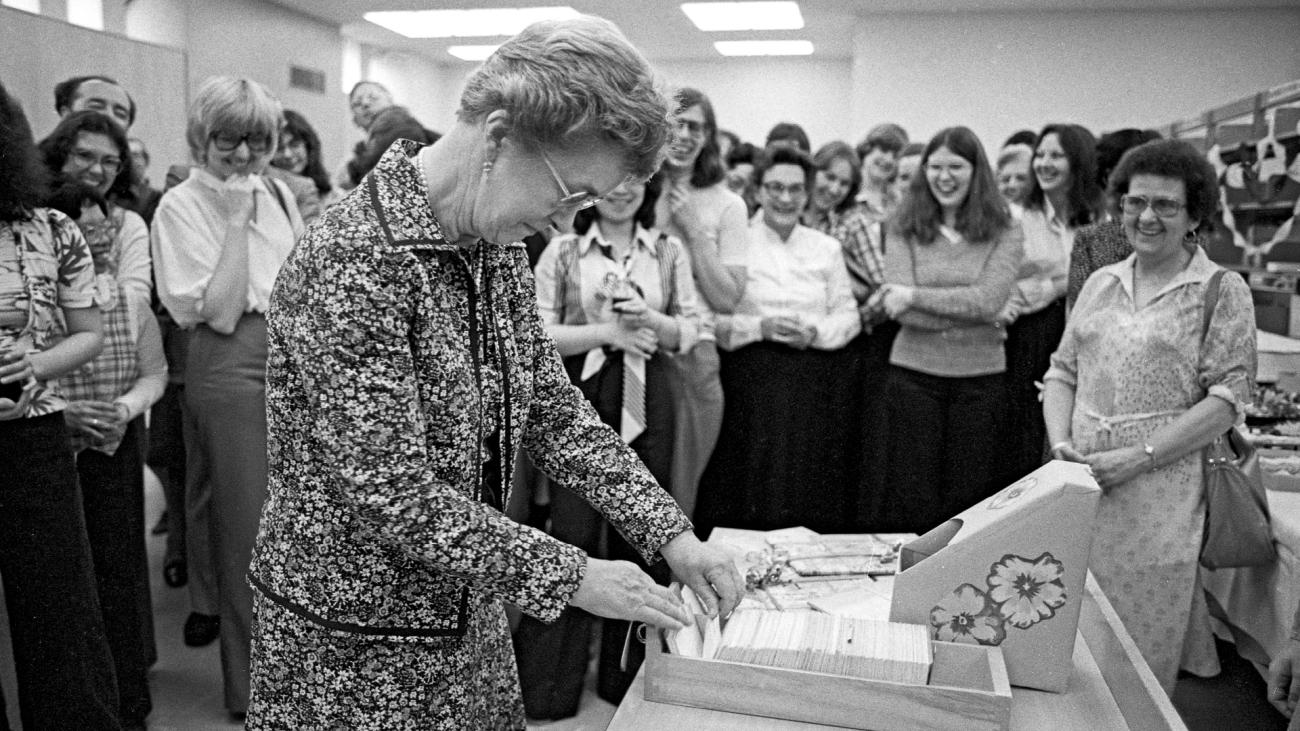Rewind
Paper pullers: The rise of microfiche
In the decade between 1968 and 1978, the UBC Library added as many volumes to its collection as it had amassed in the first 52 years of its existence. An ever-greater deluge of paper – books, documents, records – had spilled onto the shelves with ferocious speed, and by 1978 the library’s collection was overflowing its constraints. A massive physical catalogue of 6.2 million paper cards, each one representing an item in the library’s possession, occupied a sizeable chunk of the Main Library’s real estate. To locate their desired book, a library patron had to first search for its corresponding card in the catalogue.
“If we continue to expand card catalogues, we simply won’t be able to keep up with published material,” said UBC’s chief librarian, Basil Stuart-Stubbs. “We run the risk of having the entire system come crashing down around us.” The solution? A years-long project to computerize the entire catalogue and convert it into machine-readable microfiche. When the project completed, the 6.2 million cards would be transfigured into a modest pile of microfiche measuring four inches wide, six inches long, and 15 inches high.
In preparation, the library officially closed the card catalogue in 1979 with a ceremony to mark the last entry, complete with a cake in the shape of a catalogue card and – if pictures are any indication – quite an impressive quantity of wine. Eleanor Mercer, who had worked for the Library for 40 years and was on the brink of retirement, had the honour of entering the last card, which happened to be for the Guidebook for geologic field trips in the Lynn Canyon-Seymour area of North Vancouver, B.C.
In 1972, a few years before the ceremony, The Ubyssey had written with foreboding that computerized library catalogues heralded “the demise of the classroom, the lecturer, and the library.” Lucky for us, the classroom, the lecturer, and the library are still alive and well – and with 6.2 million fewer pieces of paper on the main floor.
































